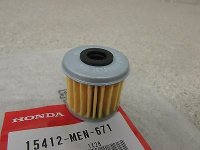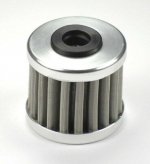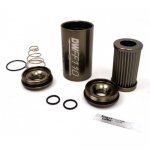Recently i read on a forum where they discussed oil filters for honda CRF 450 enduro/motorcross bikes.
Some guys advised a reusable stainless oilfilters, mainly because it was reusable and cheaper on the long run.
I have and will always use oem honda paper filters, they are not so expensive and i think they can filter smaller particles, i aslo like the idea that they trap the dirt and are then swapped out.
Some people tried the stainless filter, you have to clean them by hand and they said almost no crap came out it so i wonder it also didnt trap any particles.
One guy on the forum worked as an aviation mechanic and told that on jet engines they only use the stainless mesh filters for oil and fuel filtration, mostly because they cant collapse or detoriate under high heat/pressure.
I do like the idea of the stainless filters for fuel or maybe hydraulic oil filtration, especialy applications with high flow.
Do any of you guys know any other benefits or drawbacks and your opinion or experience with them?
I personnally work on wind turbines, for the hydraulic system and for the gearboxes they only use replaceable paper filters.
Some guys advised a reusable stainless oilfilters, mainly because it was reusable and cheaper on the long run.
I have and will always use oem honda paper filters, they are not so expensive and i think they can filter smaller particles, i aslo like the idea that they trap the dirt and are then swapped out.
Some people tried the stainless filter, you have to clean them by hand and they said almost no crap came out it so i wonder it also didnt trap any particles.
One guy on the forum worked as an aviation mechanic and told that on jet engines they only use the stainless mesh filters for oil and fuel filtration, mostly because they cant collapse or detoriate under high heat/pressure.
I do like the idea of the stainless filters for fuel or maybe hydraulic oil filtration, especialy applications with high flow.
Do any of you guys know any other benefits or drawbacks and your opinion or experience with them?
I personnally work on wind turbines, for the hydraulic system and for the gearboxes they only use replaceable paper filters.



